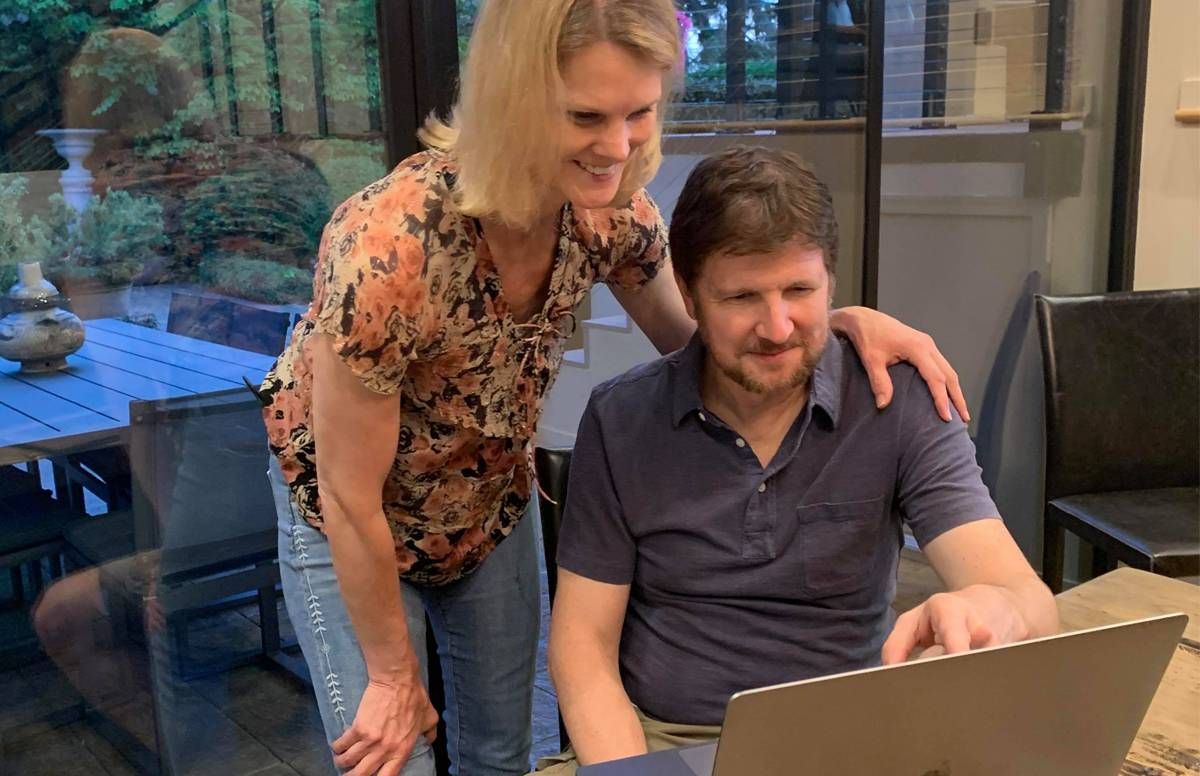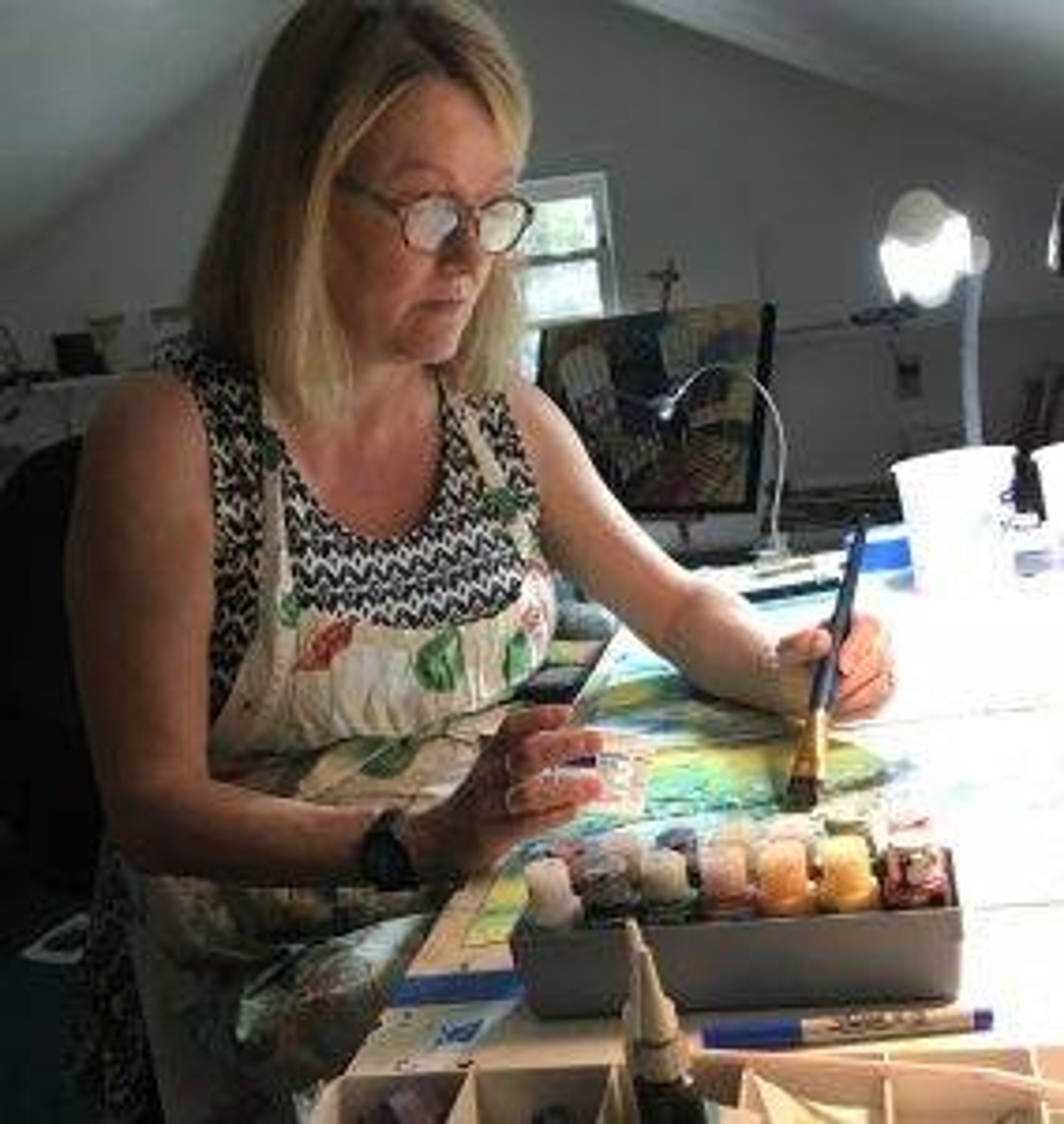COVID-19 Has Turned Couples at Home Into Coworkers
Working from home together can be tricky — here's how some make it work
Under normal circumstances, when Debra Aho Williamson, 52, works from home, it means she works from all over her home in Seattle’s Mercer Island neighborhood. In an office space in the family room. From the couch. On sunny days, from the deck.

But circumstances aren’t normal during the coronavirus pandemic. Welcome to the new world of working from home.
For the past two months, Williamson, a principal analyst at a technology consulting firm, has been coworking from home with her husband Brad, the head of a technology analytics and consulting firm who would ordinarily travel to see clients or work from his company’s downtown Seattle office.
It’s the first time the Williamsons have worked in the same space, and they’ve been figuring out how to make it work.
Who Gets the Guestroom?
Initially, they each thought they'd rotate between working from the house’s common areas and a guestroom they’d converted into a temporary office. But Debra decided she needed the quiet and commandeered the guestroom.
So much togetherness can be tough on remote-work veterans who aren’t accustomed to sharing their homes during the day.
“I like being able to shut the door and just get started,” she said. “It made me feel a lot more productive to have a space to go to.”
Brad is fine floating between other home workspaces. “It works well,” he said, adding that he remains available if Debra changes her mind.
With tens of millions of people working from home because of COVID-19, couples who eat, sleep and play together are now working in the same space there too — some for the first time.
Our Commitment to Covering the Coronavirus
We are committed to reliable reporting on the risks of the coronavirus and steps you can take to benefit you, your loved ones and others in your community. Read Next Avenue's Coronavirus Coverage.
It’s an adjustment for many. In some cases, working from home together has also been a preview of what life could be like in retirement, when couples can enjoy each other’s company 24/7. That preview has led some to want to accelerate taking the plunge.
“It’s been a realization for me that we definitely need to retire soon,” said Megan Shank, 54, who worked from the Fullerton, Calif., house she shares with her husband Don, 60, and their four kids for a few days before being furloughed from her job as product integration director at an airline entertainment systems manufacturer.
Coworking in Tight Quarters
For others, though, working from home together during the pandemic has been awkward, stressful or confusing, or a combination of those.
Sometimes, space is limited. In other cases, so much togetherness can be tough on remote-work veterans who aren’t accustomed to sharing their homes during the day. Newcomers to home-office life are, in certain cases, realizing their partners don’t appreciate the company.
Cami Kaos, of Portland, Ore., is a work-from-home expert and appeared on an April 23 webinar on survival tactics for remote work during COVID-19. Kaos has worked from home for a dozen years, the past 10 for WordPress, the content software platform whose parent company has always operated as a virtual business. Lately, though, things have changed.
Since COVID-19 struck, Kaos has been working elbow to elbow with her significant other and her 18-year-old daughter. “It’s lovely to have them home, but it’s my space, and now it’s not mine anymore,” she said during the webinar.
Pre-pandemic, Kaos’ home-office rules included never working from bed or the bedroom. Now, with everyone under the same roof, if one person needs privacy for a call, the other might not have a choice, Kaos said.
Don’t beat yourself up if you don’t have the perfect setup, said Darren Buckner, cofounder and CEO of the Workfrom online community for remote workers, during that webinar. “I would encourage everyone who’s dealing with this to have some grace with yourself. You’ll get better. This is not easy,” Buckner said.
Rituals to Bookend the Workday
Without being able to go somewhere to work, couples have adopted rituals to signal to each other when their “office hours” begin and end.
Robin Becic, 59, and her husband Tom, 62, now text each other from opposite ends of their house in Portland, Ore., when it’s time for lunch or to begin the walk they’ve started taking in late afternoons to signal the end of the workday.
At first, having everyone around was exciting.
Neither of the Becics had worked from home full-time before the coronavirus outbreak. But when the pandemic hit, it shut down the Oregon Society of Artists, a nonprofit group where Robin is the volunteer gallery director, and the commercial real estate brokerage where Tom is a vice president.

Robin, a watercolor artist, already had a small office on the main floor of the house for whenever she worked from home, and had turned an upstairs bedroom into an art studio. “I get up, read the paper, have a small breakfast and then shower and do my makeup and feel like I’m dressed for the day,” she said. “Then I look at email or I get into the studio and start messing things up. I don’t like to be in my PJs.”
Tom has an office in the finished basement, but rarely worked there before COVID-19. After his company sent people home to work March 13, he outfitted the space with two monitors to use with his computer and an internet booster to improve his Wi-Fi connection.
The couple walked together twice a day in the early days of the crisis to deal with pandemic-induced stress. Now, “it’s a good sign that we’re down to one walk,” Robin said. “That means things are more dialed in.”
Missing Work Colleagues
Once Megan Shank was furloughed, she had to learn to be respectful of the need for quiet while Don, business development manager for a southern California aerospace company, worked from home and their kids were in school there online.
At first, having everyone around was exciting. “It’s new, you’re home, there are projects, we got into a schedule,” Megan said.

But the longer she has been furloughed — she expects to start her job again May 26, from home — the more she missed the social interaction she’d had with coworkers.
On Mercer Island, Brad Williamson either shuttles between rooms if he is on calls or sits at a desk. The couple’s daughters, a college freshman and high school junior, stick to their rooms during the day. The family congregates for dinners, which they’re planning in advance for the first time, and take turns cooking.
The Williamsons have found working from home to be an unexpected opportunity to bond with their daughters before the young women move out for good. “We’ll look back on this time and say, ‘Wow, that was cool,’” Brad said. “But when you’re in it, it’s very intense.”

